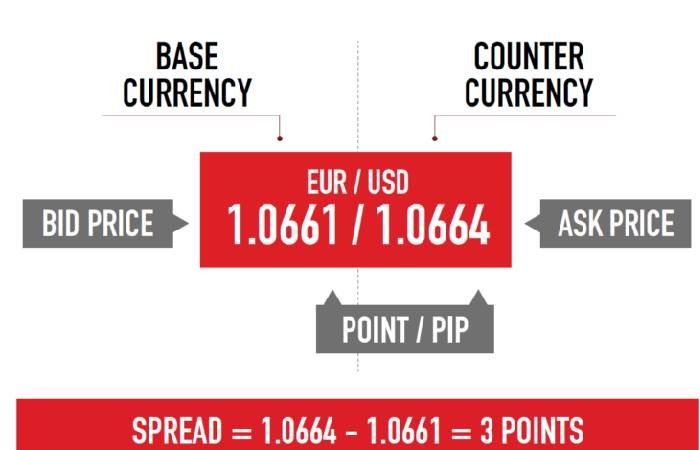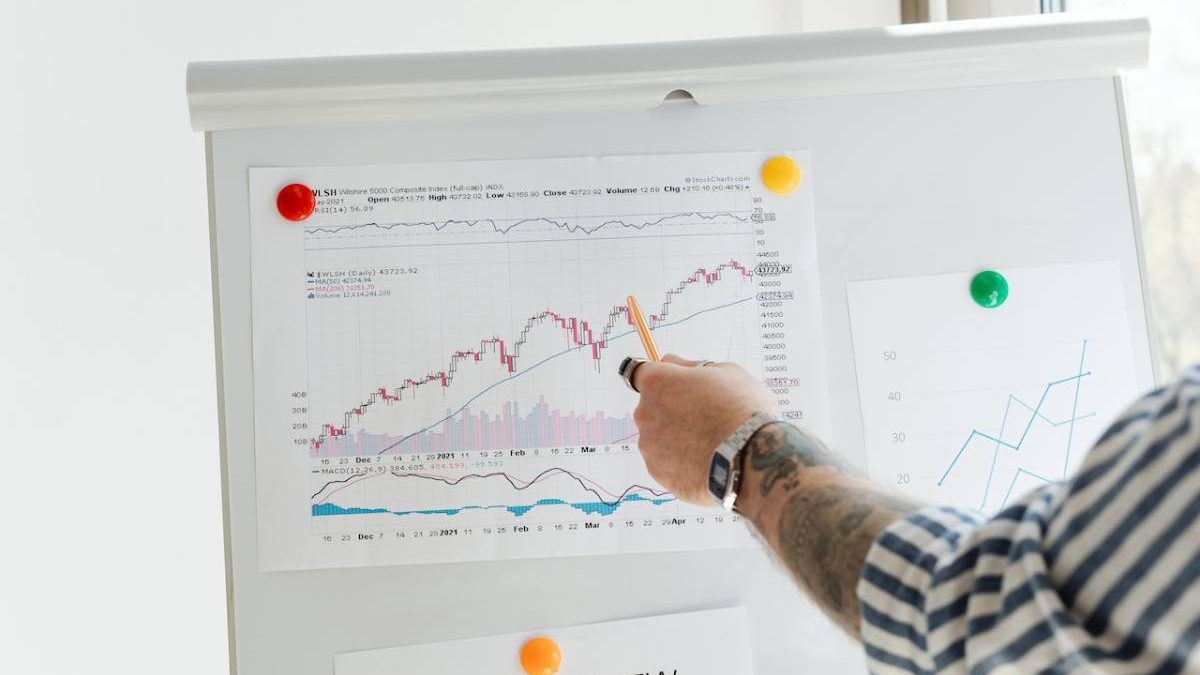What is Forex Trading? – We can interpret it as a network of buyers and sellers transferring money at an agreed rate. It’s how individuals, companies, and central banks convert one currency to another – if you’ve travelled abroad, you’ve probably made a forex trade.
While we exchange much currency for practical purposes, we complete most alterations for profit. The amount of cash transformed daily can make some currencies’ price movements volatile. This volatility makes Forex trading attractive to traders: It brings more opportunities for higher profits while increasing risks.
Table of Contents
What is Forex Trading? – How do Foreign Exchange Markets Work?
Unlike stocks or commodities, the currency is not dealt with on exchanges and is traded straight between two parties in an over-the-counter (OTC) market. The Forex market is run by a worldwide network of banks spread across four main forex trading centres in various time regions: London, New York, Sydney and Tokyo. Meanwhile, there is no vital location, and you can trade Forex 24 hours a day.
There are three different types of forex markets:
What is Forex Trading? – Commercial Forex Market: The physical exchange of a coinage pair that takes place at the precise location of the trade – i.e. “on the spot” – or within a short time
Forex Onward Market: A contract that is agreed to buy and sell a certain amount of foreign currency at an exact price to be rewarded at a particular date or within a series of future dates.
Forex Futures Market: A contract to buy or sell a certain amount of a particular currency at an exact price and date in the future. Unlike futures contracts, a forward agreement is legally binding.
Most traders speculating on Forex rates will not plan to buy the same currency; Instead, they make exchange rate forecasts to take advantage of market price movements.
What is Forex Trading? – What is the Base Currency and the Counter Currency?

The base currency is the first currency included in the forex pair, while the second is called the counter currency. Forex trading always involves selling one currency to buy another, so it is narrated in pairs – the value of a forex pair is the value of one base currency in the counter money.
Each coinage in the pair is registered as a three-letter symbol consisting of two letters representing the region and one letter expressing the money itself. For instance, GBP/USD is a currency pair that includes buying the British pound and selling the US dollar.
If the British pound rises against the dollar, one pound will be worth more than the dollar, and the pair’s price will increase. If it falls, the cost of the team will lose. So if you think the base currency in a couple will strengthen against the counter currency, you can buy (buy) the pair. You can sell the team (short sell) if you think it will weaken.
To keep things organized, most providers divide pairs into the following categories:
Great Couples. Seven currencies account for 80% of worldwide forex trading. Contains EUR/USD, USD/JPY, GBP/USD, USD/CHF, USD/CAD besides AUD/USD
Secondary Couples. These currencies are traded less frequently and often involve significant currencies against each other rather than the US dollar. Includes: EUR/GBP, EUR/CHF, GBP/JPY
Strange. Cash versus primary currency from a small or developing economy. Includes USD/PLN (US Dollar – Polish Zloty), GBP/MXN (Pound Sterling – Mexican Peso), and EUR/CZK
Regional Pairs Sorted By Region – for example, Scandinavia or Australia. Includes: EUR/NOK (Euro – Norwegian Krone), AUD/NZD (Australian Dollar – New Zealand Dollar), AUD/SGD
What drives the Forex market?
The Forex market consists of currencies from all over the world, making it challenging to predict exchange rates as many factors can donate to price movements. However, like most financial markets, Forex is mainly driven by supply and demand, and it’s essential to understand the influences driving price fluctuations here.
Central Banks
The supply is precise by central banks, who can proclaim measures that will significantly impact the price of currencies. For example, quantitative easing involves pumping more money into the economy and can cause the currency’s price to fall.
News Broadcast
Commercial banks and other investors tend to invest their capital in economies with a strong outlook. Therefore, if positive news comes to the markets about a particular region, it will encourage investment and increase the demand for that region’s currency.
Unless there is a parallel increase in the supply of a currency, the discrepancy between supply and demand will cause its price to rise. Likewise, some negative news can cause investment to plummet and a currency’s price to depreciate. Therefore, currencies tend to reflect the region’s reported economic situation.
Market Sensitivity
Market sentiment, often a reaction to the news, can play an essential role in boosting exchange rates. If traders believe a currency is heading in a particular direction, they will trade accordingly and can persuade others to do the same by increasing or decreasing demand.
Economic Data
Economic data is an integral part of currency price movements for two reasons. It indicates how the economy is doing and gives insight into what the central bank can do next.
For example, suppose eurozone inflation rises overhead to the 2% level that the European Central Bank (ECB) intends to maintain. The ECB’s primary policy tool to combat rising inflation is to raise European interest rates – so traders can start buying Euros in anticipation of a rate hike. With more traders looking to seize the euro, the EUR/USD could see a price increase.
Credit Rating
Investors will try to maximize their return from the market while minimizing their risks. Therefore, when deciding where to invest, they can look at their credit ratings, interest rates, and economic data.
A country’s credit rating is a sovereign valuation of the probability of its debt being repaid. A country with a high credit score is considered a safer investment area than a low credit rating. It is often a particular focus when raising and lowering credit scores. A country with an upgraded credit rating may see a rise in the price of its currency and vice versa. How Does Forex Trading Work?
There are several ways to trade Forex, but they all work the same: by simultaneously buying one currency and selling the other. Traditionally, many forex dealings were completed through a forex broker. Still, with the rise of online trading, you can benefit from forex price action using derivatives such as CFD trading.
CFDs are leveraged products that allow you to open a situation for a fraction of the trade’s total value. Unlike non-leveraged products, you do not own assets but take place when you think the market will appreciate or fall.
While leveraged products can magnify your profits, they can also increase losses if the market moves against you.
What is Forex Trading? – What is the Spread in Forex Trading?
The difference is between the bid and asks prices quoted for a currency pair. As in many financial markets, two prices will be stated when you open a forex position. If you want to open a long post, you trade at the bid price slightly higher than the market price. If you’re going to open a short position, you sell at the asking price – just below the market price.
What is too Much in Forex?
We can trade Currencies in lots, which are lots of coins used to consolidate forex transactions. Since Forex tends to move in small amounts, contracts tend to be considerable. A standard lot is 100,000 units of the base currency. Therefore almost all forex trading is leveraged, as individual traders do not need to have 100,000 GBP (or whatever money they are trading) to put in on each trade.
What is Leverage in Forex?
Leverage is a way to gain exposure to large amounts of money without paying the total value of your position upfront. Instead, you make a small deposit known as a margin. When closing a leveraged position, your profit or loss depends on the exact volume of the trade.
What is Forex Trading? – Conclusion
Forex markets have become the most fluid and volatile in the world, with trillions of dollars traded daily. Whether trading in the spot market, futures markets or options markets, speculators and hedgers can find a tool and leverage that meets their needs.

